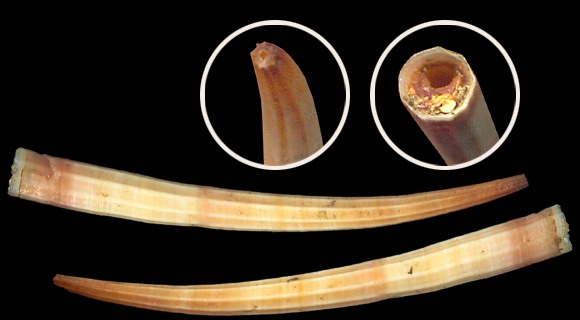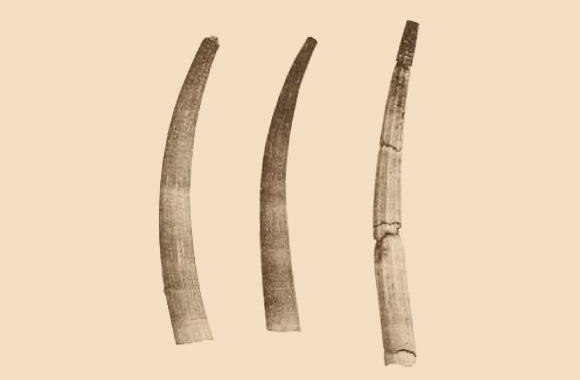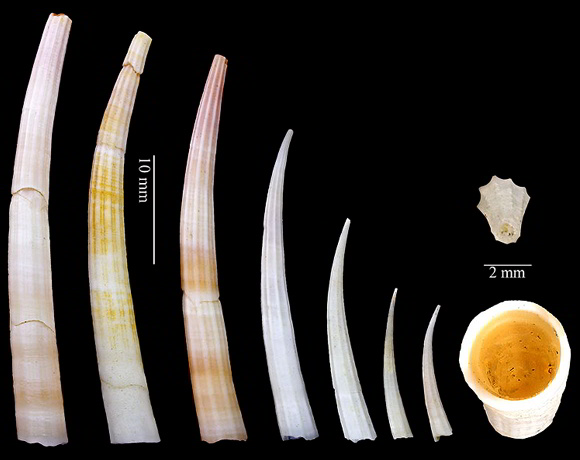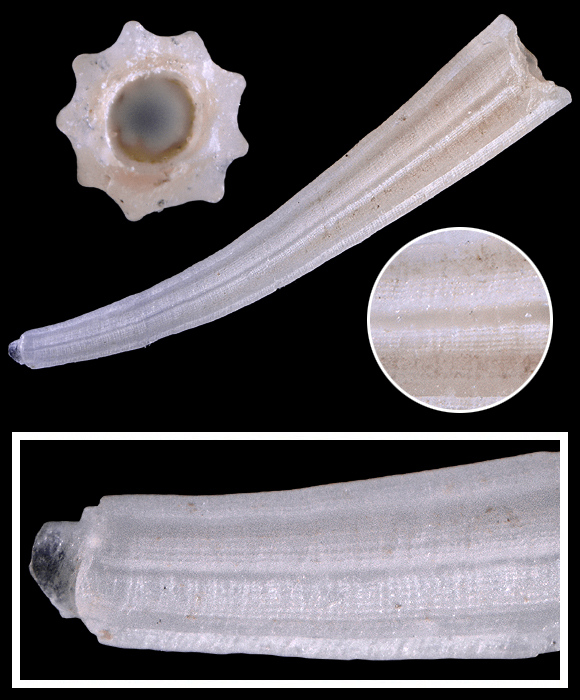
Original taxon: Dentalium inaequicostatum.
Synonym: alternans Dautzenberg.
35m deep, Antignano, Livorno, Toscana, W. Italy. 39mm.

« Shell robust, opaque, tubular, slightly arched, shrinking from front to rear. Sculpture made up of nine to ten primary longitudinal cords, alternating
with the same number of narrower and less prominent intermediate cords. All of them become obsolete near the anterior end of the shell. One notices also numerous thin growth-striae and sometimes
irregular breaks. Anterior aperture somewhat polygonoid, with a thin and sharp margin. Posterior aperture truncated, with a significantly polygonal outline, and including a central sleeve with an oval
mouth. There is neither cleft nor cutout. Colour rosy-white, tinged with a more pronounced pink at the posterior end, and ornamented of transversal bands of the same colour… »
– these alternances of strong and weak cords, and of pale and coloured band, explicate the choice by Ph. Dautzenberg of the epithet alternans, which unfortunately turned out to
be a junior homonym of Chenu’s alternans.

Original pictures provided by S. Clanzig (FR).
– (CC BY-NC-SA) –

« Shell moderately or slightly arcuate, either decidedly or slightly tapering, very solid, nearly lusterless. […] Sculpture of 9-12 strong primary ribs toward the apex, narrower than their intervals, which are smooth except for very faint, close longitudinal striation, and rather conspicuous growth-striae; smaller secondary ribs, alternating with the others, soon appear, and toward the aperture, where the sculpture becomes weaker, some tertiary cords; so the ribs are rather irregularly alternating in size; adults showing some irregular, shallow or deep constrictions around the tube, caused by interrupted growth or breakage. » – Pilsbry & Sharp: Manual of conchology, structural and systematic s.1 v.17, Philadelphia 1897, p.52 via BHL. – 55m deep, Catania, E. Sicilia. 12mm.